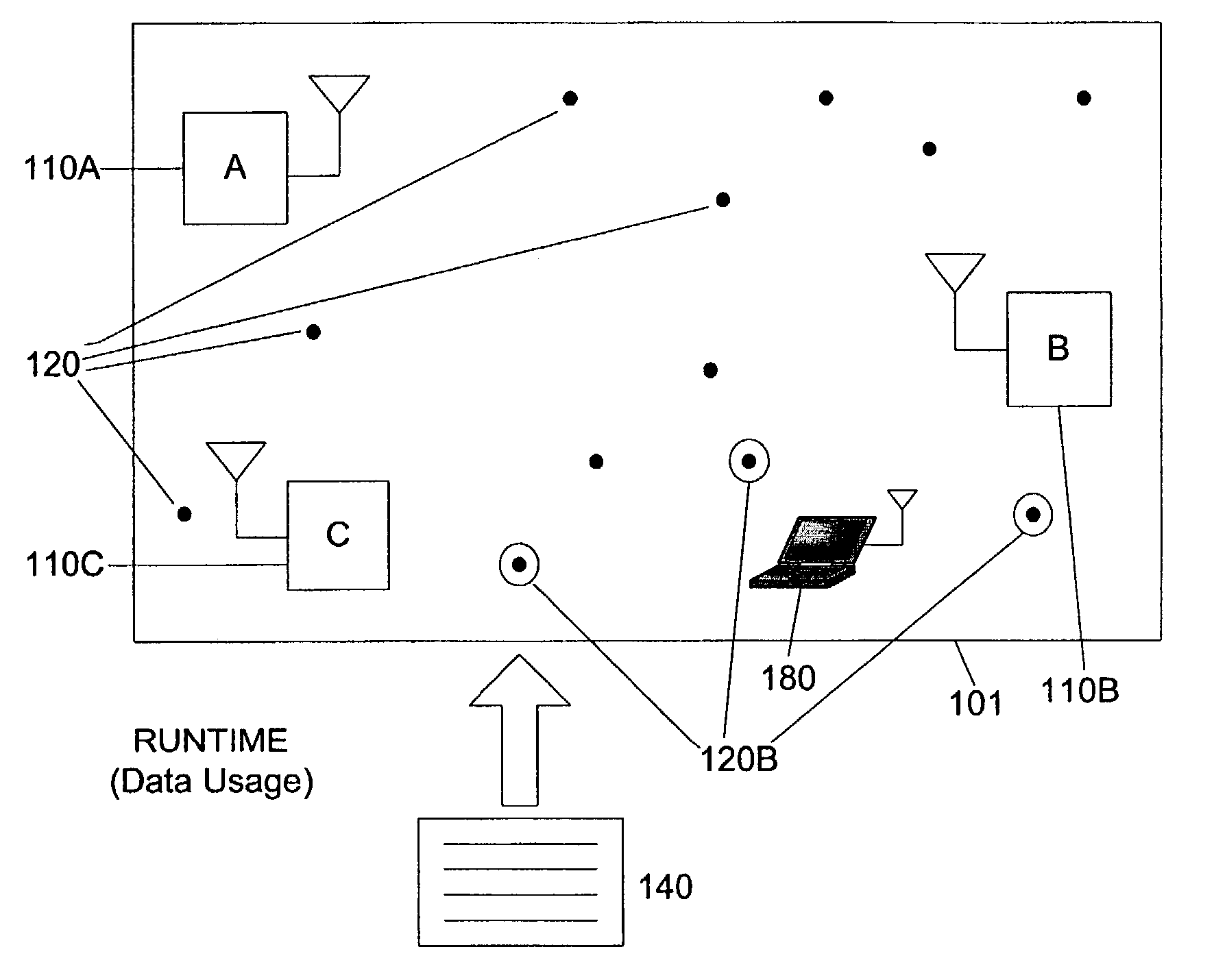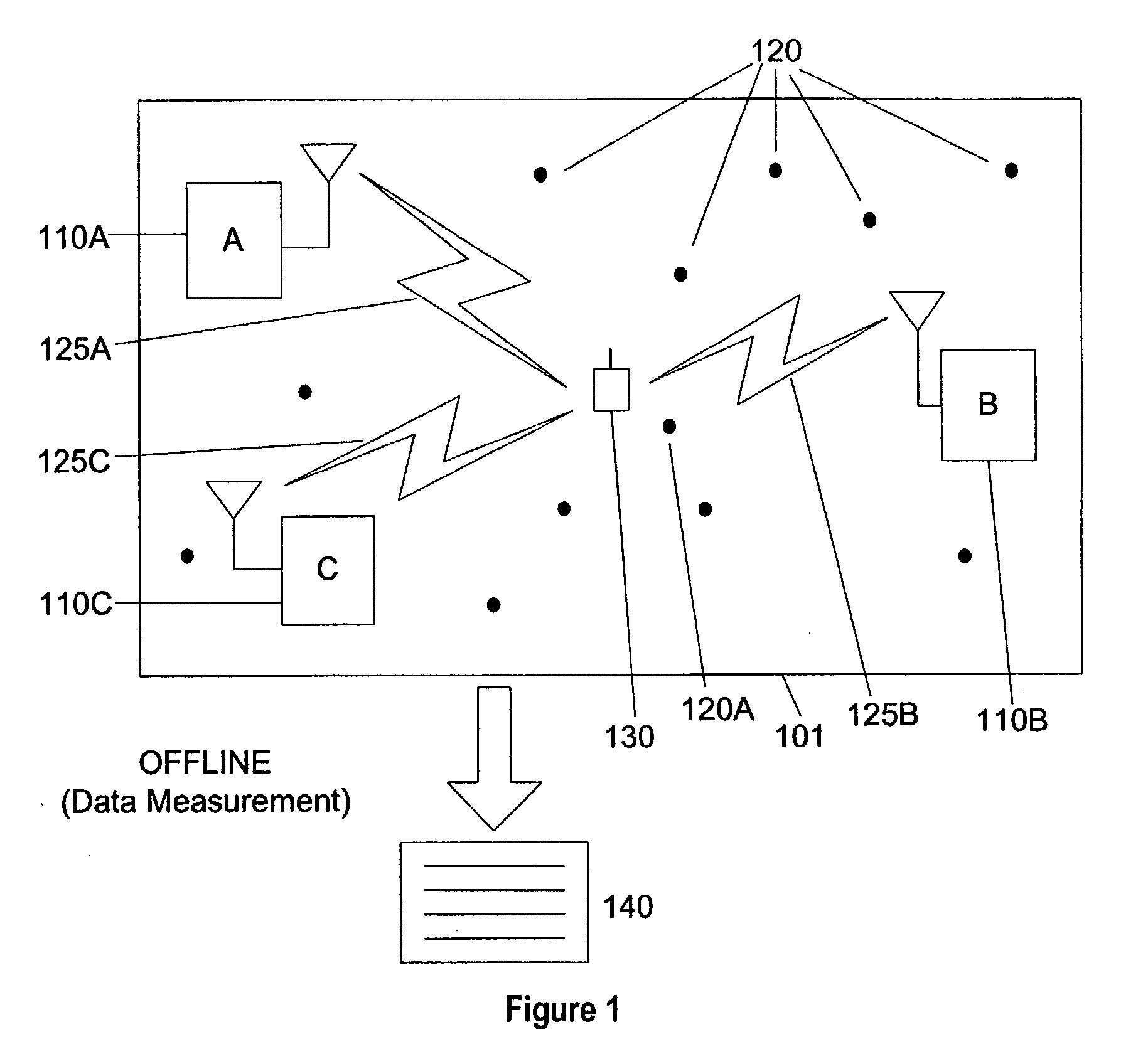Selective fusion location estimation (SELFLOC) for wireless access technologies
a wireless access and location estimation technology, applied in the field of selective fusion location estimation (selfloc) for wireless access technologies, can solve the problems of introducing estimation errors, distorted run-time information collection (such as the received signal strength), etc., and achieve the effect of enlarged smallest-polygon calculation
- Summary
- Abstract
- Description
- Claims
- Application Information
AI Technical Summary
Benefits of technology
Problems solved by technology
Method used
Image
Examples
Embodiment Construction
1. INTRODUCTION
[0026] Mobile communications systems are increasingly expected to simultaneously use a variety of wireless access technologies. Today's mobile devices are often equipped with multiple wireless interfaces for connecting to different forms of wireless networks, such as high-bandwidth cellular connections (eg.: 3 G modems), wireless Ethernet ports (eg.: IEEE 802.11), and short-distance peripheral connectors (eg.: Bluetooth ports (TM)). The proliferation of these multi-interface embedded mobile devices offers a number of opportunities in mobile business and technical research. In many settings, this heterogeneous wireless networking is deployed and available to be used for new applications. Since some users already demand the versatility of communicating over a variety of different networks, new applications can readily exploit the availability of the multiple networks. One application that can benefit from the heterogeneous wireless networks is location estimation--the a...
PUM
 Login to View More
Login to View More Abstract
Description
Claims
Application Information
 Login to View More
Login to View More - R&D
- Intellectual Property
- Life Sciences
- Materials
- Tech Scout
- Unparalleled Data Quality
- Higher Quality Content
- 60% Fewer Hallucinations
Browse by: Latest US Patents, China's latest patents, Technical Efficacy Thesaurus, Application Domain, Technology Topic, Popular Technical Reports.
© 2025 PatSnap. All rights reserved.Legal|Privacy policy|Modern Slavery Act Transparency Statement|Sitemap|About US| Contact US: help@patsnap.com



